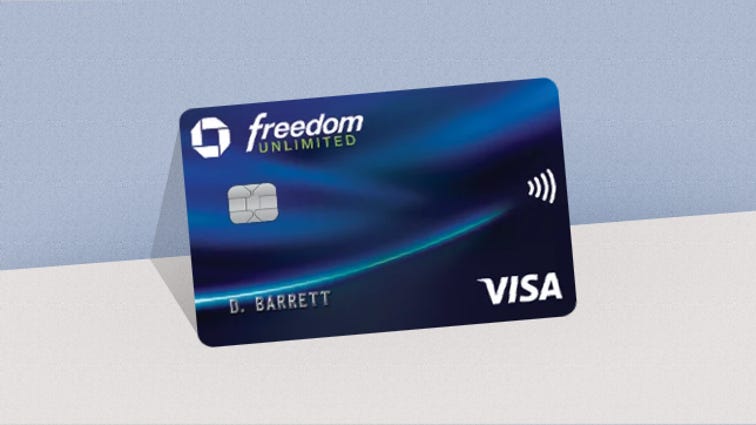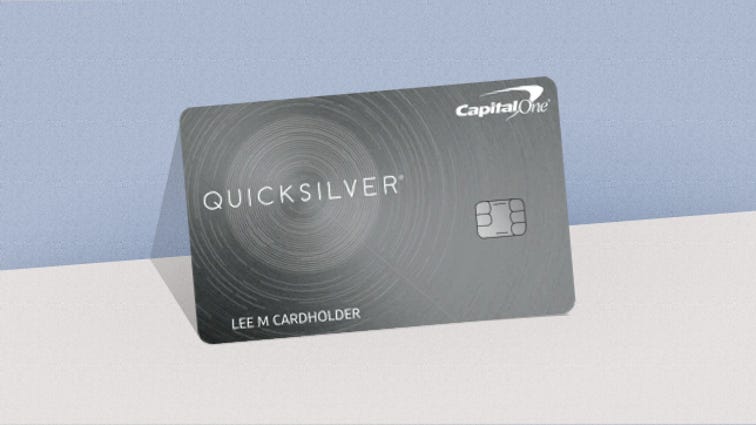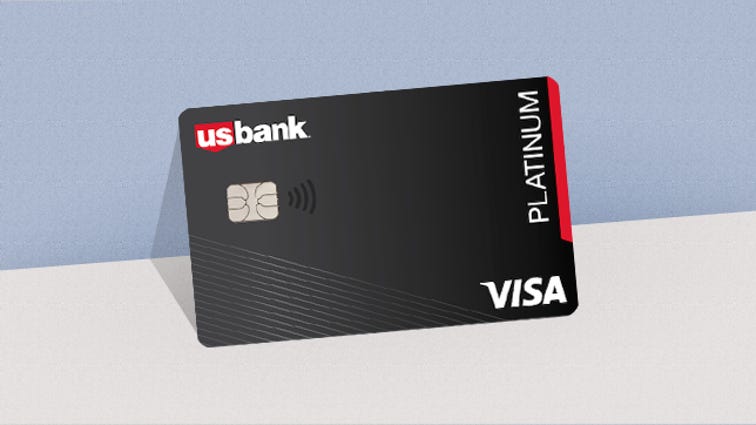Best 0% APR credit cards for August 2021 – CNET
If you use it responsibly, a credit card with a 0% introductory rate can help you make a large purchase, consolidate credit card debt and lower your credit utilization. Just like any credit card, the optimal scenario is that you pay off your balance each month. But a 0% introductory interest period can give you a helpful reprieve if you need more time to pay off your existing debt.
If you use it responsibly, a credit card with a 0% introductory rate can help you make a large purchase, consolidate credit card debt and lower your credit utilization. Just like any credit card, the optimal scenario is that you pay off your balance each month. But a 0% introductory interest period can give you a helpful reprieve if you need more time to pay off your existing debt.
The best 0% APR credit cards typically feature a 15-month introductory APR period and a $200 or $250 sign-on or welcome bonus. And unless you’re planning to carry a credit card balance of $2,500 or more well beyond that period, the bonus should surpass what you’d save in interest with a credit card that has a longer intro APR offer but no bonus.
That noted, if your primary goal is to consolidate existing credit card debt, check out our list of the best balance transfer credit card and our top picks for personal loans. Once you have a good understanding of how much you can pay back each month, you can compare your options based on the welcome bonuses and total interest rate. Check out our current top picks as well as answers to frequently asked questions about 0% introductory APR credit cards. We’ll update this list periodically.
Best 0% APR credit card overall
JPMorgan Chase
Annual fee: $0
Duration of introductory 0% APR: 15 months on purchases
Standard APR: 14.99% to 23.74% variable
Welcome bonus: $200 cash back
Bonus spending threshold: $500 on purchases in the first three months from account opening
Rewards: 5% cash back on travel booked through Chase; 5% on grocery store purchases (not including Target ® or Walmart ® purchases) on up to $12,000 spent in the first year, 3% on dining at restaurants; 3% on drugstore purchases; 1.5% on other purchases.
Our top pick for best 0% introductory APR credit card, the Chase Freedom Unlimited, checks all of the boxes: 15 months of introductory 0% APR on purchases (14.99% to 23.74% variable APR thereafter), a $200 bonus after spending only $500 in the first three months from account opening and competitive rewards.
The base reward rate is 1.5% cash back on combined purchases, and Chase offers 5% cash back on travel booked through Chase and 3% back on restaurant dining and drugstore purchases. Plus, you can earn 5% cash back on grocery store purchases (not including Target or Walmart purchases) on up to $12,000 spent in the first year. Even if it’s not travel-related, you’re looking at 1.5% back on your net purchases right off the bat, along with a $200 bonus.
Best 0% APR card for travel abroad
Capital One
Annual fee: $0
Duration of introductory 0% APR: 15 months on purchases
Standard APR: 15.49% to 25.49% variable
Welcome bonus: $200 cash back
Bonus spending threshold: $500 on purchases within three months from account opening
Rewards: 1.5% cash back on every purchase
The Capital One Quicksilver cash rewards credit card is a close runner-up to the Chase Freedom Unlimited. The highlights are virtually identical but the Quicksilver lacks the Chase card’s higher cash back rates for travel and restaurant dining. That noted, the Capital One distinguishes itself by having no foreign transaction fee — which can be as high as 3% with other cards (including the Chase Freedom Unlimited).
If you’re planning a big trip abroad, you might consider signing up for both cards: Use the Chase Freedom Unlimited for your plane tickets and the Capital One Quicksilver for your expenses overseas.
Otherwise, both cards feature 15 months of intro 0% APR purchasing, a $200 welcome bonus (after spending $500 within the first three months) and 1.5% cash back on general purchases.
Best welcome bonus for a 0% APR credit card
Bank of America
Annual fee: $0
Duration of introductory 0% APR: 12 billing cycles on purchases from date of account opening
Standard APR: 13.99% to 23.99% variable
Welcome bonus: 25,000 online bonus points
Bonus spending threshold: $1,000 on purchases within 90 days from account opening
Rewards: Unlimited 1.5 points per dollar on all purchases
The Bank of America Travel Rewards credit card is similar to the Chase Freedom Unlimited and Capital One Quicksilver — but features a higher welcome bonus (as well as a modestly higher spending threshold) and a shorter introductory 0% APR period. The 25,000 bonus points (after spending $1,000 in the first 90 days) can be redeemed for a $250 statement credit against travel and dining eligible purchases, and the points never expire. Qualifying travel and dining purchases include taxis, ride shares, buses, trains, bars, fast food, flights, hotels, restaurants and more. For most people, that means redemption shouldn’t be a problem.
The extra $50 worth of value from the welcome bonus will be worth more than the interest you’ll spend during those final three months (compared to the 15-month introductory APR period offered by Chase and Capital One) when your average balance during those months is less than $1,000. If it’s more than $1,000, you’ll save more in credit card interest with the Chase or Capital One card. This calculation assumes an APR of 20%.
Take a look at your repayment plan and if you don’t expect to have a $1,000 balance or more after 12 months, the Bank of America Travel Rewards card is a good choice.
Longest introductory 0% APR period
US Bank
Annual fee: $0
Duration of introductory 0% APR: 20 billing cycles on purchases and balance transfers
Standard APR: 14.49% to 24.49% variable
Welcome bonus: None
Bonus spending threshold: N/A
Rewards: None
The US Bank Visa Platinum offers the longest introductory 0% APR offer of any card membership we researched, with 20 billing cycles of interest-free balances after signing up (though remember you still need to make minimum monthly payments; 14.49% to 24.49% variable APR thereafter). The trade-off is a lack of welcome bonus and rewards.
The extra five months of 0% credit card interest (compared with the picks above) is only worth it if you plan on having an average balance over $2,400 during those months, and that doesn’t factor in the additional 1.5% of spending rewards.
0% APR credit cards, compared
| Card | Chase Freedom Unlimited | Capital One Quicksilver Cash | Bank of America Travel Rewards | US Bank Visa Platinum |
|---|---|---|---|---|
| Annual fee | $0 | $0 | $0 | $0 |
| Duration of 0% intro APR | 15 months on purchases | 15 months on purchases | 12 billing cycles on purchases from date of account opening | 20 billing cycles on purchases and balance transfer |
| Standard APR | 14.99% to 23.74% variable | 15.49% to 25.49% variable | 13.99% to 23.99% variable | 14.49% to 24.49% variable |
| Welcome bonus | $200 | $200 | 25,000 online bonus points ($250 statement credit for travel and dining purchases) | none |
| Bonus threshold | $500 in purchases in the first 3 months | $500 in purchases in the first 3 months | $1,000 in purchases in first 90 days | n/a |
What is a 0% APR credit card?
A 0% annual percentage rate (APR) credit card is a simplified term for credit cards with particularly long, introductory 0% APR periods. Most rewards credit cards offer at least 12 months of 0% APR after signing up, but many issuers also have extended offers for select cards. These cards can help you save money in interest payments during that introductory period. But they can also tempt you to carry a balance — which can accumulate into a longstanding debt over time.
When does it make sense to apply for a 0% or low-APR credit card?
Ideally, you’re paying off your credit card balance every month to avoid paying an interest charge. If you’re making a significant purchase that you’ll need to pay for over a period of time, using a 0% APR card could save you serious money.
These cards may also be useful when you’re in a financial pinch — if you’re between jobs or navigating a period of inconsistent cash flow. As long as the intro APR period doesn’t lure you into spending beyond your means, a 0% credit card can be a helpful tool.
Are 0% interest credit cards good for consolidating credit card debt?
Maybe — but that’s not what they’re designed for. Our picks for the best balance transfer card includes a number of options well-suited for consolidating credit card debt — and it may be worthwhile to explore a personal loan, too.
More credit card recommendations
The editorial content on this page is based solely on objective, independent assessments by our writers and is not influenced by advertising or partnerships. It has not been provided or commissioned by any third party. However, we may receive compensation when you click on links to products or services offered by our partners.


 n “,”topic”:””,”ttag”:””,”variant”:””,”viewguid”:””,”event”:”listicle|image|1″,”correlationId”:””,”_destCat”:”https://oc.brcclx.com/t/?lid=26673284&cr=28127&last_updated=1598401479&tid=[subid_value]”,”productName”:”Best 0% APR credit card overall”,”formatType”:”IMAGE”,”location”:”LIST”,”position”:1,”sku”:””,”dwLinkTag”:”article-body|listicle|image”,”selector”:”#article-body #listicle-e5f60cef-255e-45e6-b1ca-ad73cd231f30 .itemImage”}}” rel=”noopener nofollow” target=”_blank”>
n “,”topic”:””,”ttag”:””,”variant”:””,”viewguid”:””,”event”:”listicle|image|1″,”correlationId”:””,”_destCat”:”https://oc.brcclx.com/t/?lid=26673284&cr=28127&last_updated=1598401479&tid=[subid_value]”,”productName”:”Best 0% APR credit card overall”,”formatType”:”IMAGE”,”location”:”LIST”,”position”:1,”sku”:””,”dwLinkTag”:”article-body|listicle|image”,”selector”:”#article-body #listicle-e5f60cef-255e-45e6-b1ca-ad73cd231f30 .itemImage”}}” rel=”noopener nofollow” target=”_blank”>


 n “,”topic”:””,”ttag”:””,”variant”:””,”viewguid”:””,”event”:”listicle|image|2″,”correlationId”:””,”_destCat”:”https://www.capitalone.com/credit-cards/quicksilver/”,”productName”:”Best 0% APR card for travel abroad”,”formatType”:”IMAGE”,”location”:”LIST”,”position”:2,”sku”:””,”dwLinkTag”:”article-body|listicle|image”,”selector”:”#article-body #listicle-3586e0d1-fe2d-4641-8986-ba60e654ef1c .itemImage”}}” rel=”noopener nofollow” target=”_blank”>
n “,”topic”:””,”ttag”:””,”variant”:””,”viewguid”:””,”event”:”listicle|image|2″,”correlationId”:””,”_destCat”:”https://www.capitalone.com/credit-cards/quicksilver/”,”productName”:”Best 0% APR card for travel abroad”,”formatType”:”IMAGE”,”location”:”LIST”,”position”:2,”sku”:””,”dwLinkTag”:”article-body|listicle|image”,”selector”:”#article-body #listicle-3586e0d1-fe2d-4641-8986-ba60e654ef1c .itemImage”}}” rel=”noopener nofollow” target=”_blank”>


 n “,”topic”:””,”ttag”:””,”variant”:””,”viewguid”:””,”event”:”listicle|image|3″,”correlationId”:””,”_destCat”:”https://www.bankofamerica.com/credit-cards/products/travel-rewards-credit-card/”,”productName”:”Best welcome bonus for a 0% APR credit card”,”formatType”:”IMAGE”,”location”:”LIST”,”position”:3,”sku”:””,”dwLinkTag”:”article-body|listicle|image”,”selector”:”#article-body #listicle-9c3897dc-b95d-49f3-b185-973e2e7ee923 .itemImage”}}” rel=”noopener nofollow” target=”_blank”>
n “,”topic”:””,”ttag”:””,”variant”:””,”viewguid”:””,”event”:”listicle|image|3″,”correlationId”:””,”_destCat”:”https://www.bankofamerica.com/credit-cards/products/travel-rewards-credit-card/”,”productName”:”Best welcome bonus for a 0% APR credit card”,”formatType”:”IMAGE”,”location”:”LIST”,”position”:3,”sku”:””,”dwLinkTag”:”article-body|listicle|image”,”selector”:”#article-body #listicle-9c3897dc-b95d-49f3-b185-973e2e7ee923 .itemImage”}}” rel=”noopener nofollow” target=”_blank”>


 n “,”topic”:””,”ttag”:””,”variant”:””,”viewguid”:””,”event”:”listicle|image|4″,”correlationId”:””,”_destCat”:”https://www.usbank.com/credit-cards/visa-platinum-credit-card.html”,”productName”:”Longest introductory 0% APR period”,”formatType”:”IMAGE”,”location”:”LIST”,”position”:4,”sku”:””,”dwLinkTag”:”article-body|listicle|image”,”selector”:”#article-body #listicle-80b63b4b-5f17-4cf8-8b28-844e1b2af71b .itemImage”}}” rel=”noopener nofollow” target=”_blank”>
n “,”topic”:””,”ttag”:””,”variant”:””,”viewguid”:””,”event”:”listicle|image|4″,”correlationId”:””,”_destCat”:”https://www.usbank.com/credit-cards/visa-platinum-credit-card.html”,”productName”:”Longest introductory 0% APR period”,”formatType”:”IMAGE”,”location”:”LIST”,”position”:4,”sku”:””,”dwLinkTag”:”article-body|listicle|image”,”selector”:”#article-body #listicle-80b63b4b-5f17-4cf8-8b28-844e1b2af71b .itemImage”}}” rel=”noopener nofollow” target=”_blank”>


